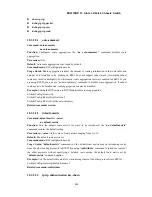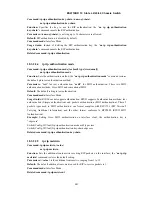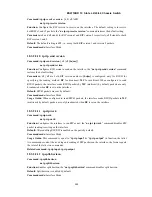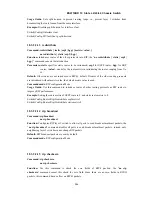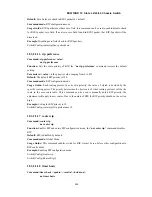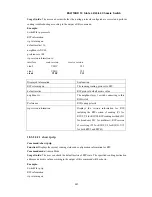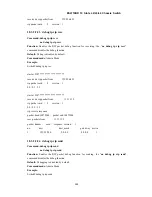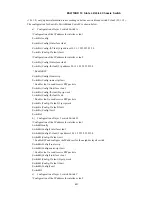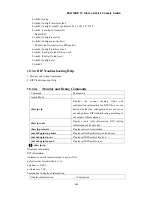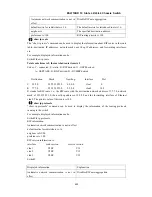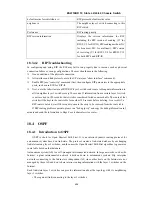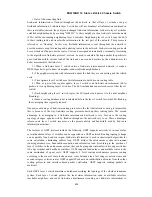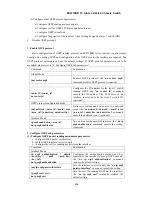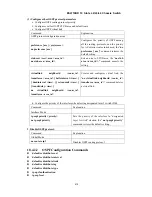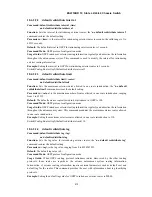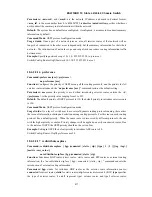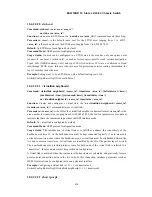
404
E
ES4710BD 10 Slots L2/L3/L4 Chassis Switch
default metric for redistribute is :
RIP protocol default metric value.
neigbour is:
The neighbor layer 3 switch connecting to this
RIP switch.
Preference RIP
routing priority.
RIP version information
Displays the version information for RIP,
including the RIP version of sending (V1 for
RIP-I, V2 for RIP-II), RIP sending method (BC
for broadcast, MC for multicast), RIP version
of receiving (V1 for RIP-I, V2 for RIP-II, V12
for both RIP-I and RIP-II).
18.3.4.2 RIP
Troubleshooting
In configuring and using RIP, the RIP may fail to run properly due to reasons such as physical
connection failure or wrong configurations. The user should ensure the following:
Good condition of the physical connection.
All interface and link protocols are in the UP state (use “show interface” command).
Enable RIP (use “router rip” command) first, then configure RIP parameters in the appropriate
ports, such as use RIP-I or RIP-II.
Next, note the inherit nature of RIP: RIP layer 3 switch sends route table update information to
all its neighbor layer 3 switches every 30 seconds. If information from a certain layer 3 switch
is not received in 180 seconds, that switch is considered failed or unreachable. The route of that
switch will be kept in the route table for another 120 seconds before deleting. As a result, if a
RIP route is deleted, wait 300 seconds to ensure the entry to be removed from the route table.
If RIP routing problems persists, please run “debug ip rip” and copy the debug information in 3
minute and send the information to Edge-Core technical service center.
18.4 OSPF
18.4.1 Introduction to OSPF
OSPF is short for Open Shortest Path First. It is an interior dynamic routing protocol for
autonomous system based on link-state. The protocol creates a link-state database by exchanging
link-state among layer 3 switches, and then uses the Open Shortest Path First algorithm to generate a
route table based on that database.
Autonomous system (AS) is a self-managed interconnected network. In large networks, such as the
Internet, a giant interconnected network is broken down to autonomous systems. Big enterprise
networks connecting to the Internet are independent AS, since other hosts on the Internet are not
managed by those AS and don’t share interior routing information with the layer 3 switches on the
Internet.
Each link-state layer 3 switches can provide information about the topology with its neighboring
layer 3 switches.
• The segment (link) connecting to the layer 3 switches

